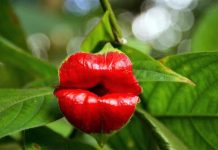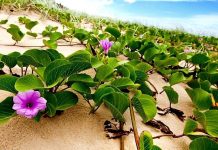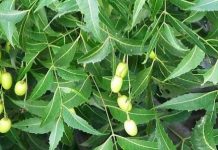Scientific name: Ceiba pentandra (L.) Gaertn.
Family: Bombacaceae
Synonym: Bombax pentandrum L.
Bengali/Vernacular name: Swetshimul (Bengali), Burma shimul (Chittagong).
Tribal name: Bely-plow (Khumi), La-kung (Lushai), Gawnja-bawn (Rakhaing).
English name: Kapok, Ceiba, White silk cotton tree.
Description of the plant: An erect, medium-sized deciduous tree, up to 20 m tall. Leaves at the end of twigs, long petiolate, digitately compound, leaflets 5-8, cuneate, apex acuminate, margin entire. Flowers are numerous large, appears at the ends of the branches in clusters, fragrant, and creamy white. Fruit a capsule, 15-20 cm long, dehiscent.

Plant parts used: Leaf, bark, flower, and root.
Ethnomedicinal uses: A decoction is made with the barks of the plant, after adding some sugar it is taken thrice a day (10 ml amount each time) until the type II diabetes is cured.
Decoction of flower is used to treat constipation.
Powder prepared from the tap root of young plant is advised to take for the treatment of gonorrhoea, dysuria, and fever.
Decoction prepared from the roots of the plant, after adding some sugar it is taken thrice a day (50 ml amount each time) until the dysmenorrhoea is cured.
Infusion of leaves, onions, and a little turmeric, used to treat cough.
Decoction of bark is used for the treatment of bronchitis, hypertension, abdominal complaints, diarrhoea, flatulence, constipation, and fever.
Warmed young leaves of the plant mixed with the palm oil are eaten as a prescription for heart problem.
Decoction prepared from the bark of the plant is advised to take twice a day (50 ml amount each time) until the dysentery is cured.
Paste prepared from the leaves of the plant is applied on the affected part of the body for the treatment of swollen fingers, wounds, and sores.
Distribution: The species is very common in Cox’s Bazar district, especially along the Cox’s Bazar to Teknaf highway.
Is this plant misidentified? If yes, please tell us….














